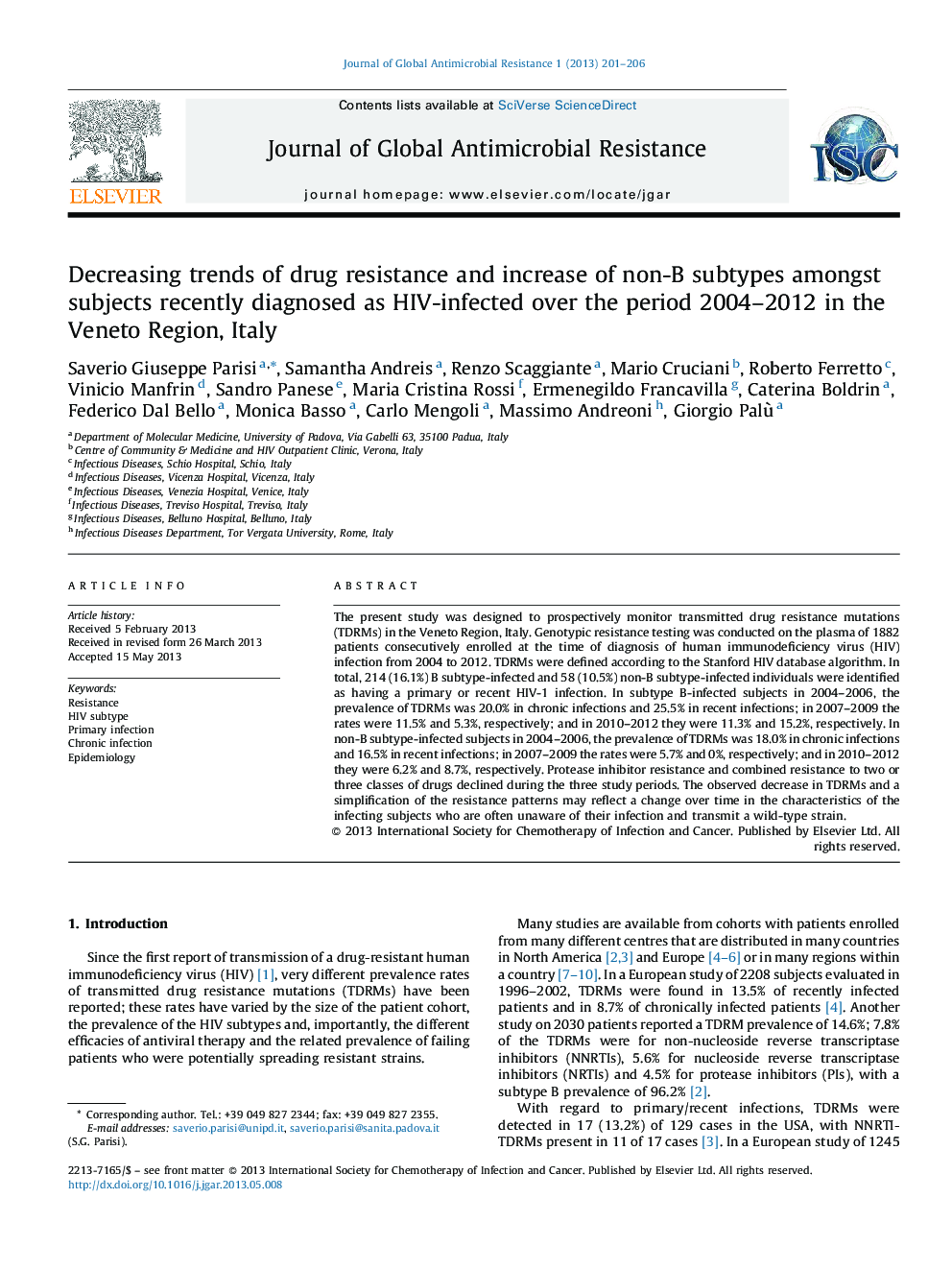| Article ID | Journal | Published Year | Pages | File Type |
|---|---|---|---|---|
| 3405664 | Journal of Global Antimicrobial Resistance | 2013 | 6 Pages |
Abstract
The present study was designed to prospectively monitor transmitted drug resistance mutations (TDRMs) in the Veneto Region, Italy. Genotypic resistance testing was conducted on the plasma of 1882 patients consecutively enrolled at the time of diagnosis of human immunodeficiency virus (HIV) infection from 2004 to 2012. TDRMs were defined according to the Stanford HIV database algorithm. In total, 214 (16.1%) B subtype-infected and 58 (10.5%) non-B subtype-infected individuals were identified as having a primary or recent HIV-1 infection. In subtype B-infected subjects in 2004-2006, the prevalence of TDRMs was 20.0% in chronic infections and 25.5% in recent infections; in 2007-2009 the rates were 11.5% and 5.3%, respectively; and in 2010-2012 they were 11.3% and 15.2%, respectively. In non-B subtype-infected subjects in 2004-2006, the prevalence of TDRMs was 18.0% in chronic infections and 16.5% in recent infections; in 2007-2009 the rates were 5.7% and 0%, respectively; and in 2010-2012 they were 6.2% and 8.7%, respectively. Protease inhibitor resistance and combined resistance to two or three classes of drugs declined during the three study periods. The observed decrease in TDRMs and a simplification of the resistance patterns may reflect a change over time in the characteristics of the infecting subjects who are often unaware of their infection and transmit a wild-type strain.
Related Topics
Life Sciences
Immunology and Microbiology
Applied Microbiology and Biotechnology
Authors
Saverio Giuseppe Parisi, Samantha Andreis, Renzo Scaggiante, Mario Cruciani, Roberto Ferretto, Vinicio Manfrin, Sandro Panese, Maria Cristina Rossi, Ermenegildo Francavilla, Caterina Boldrin, Federico Dal Bello, Monica Basso, Carlo Mengoli,
